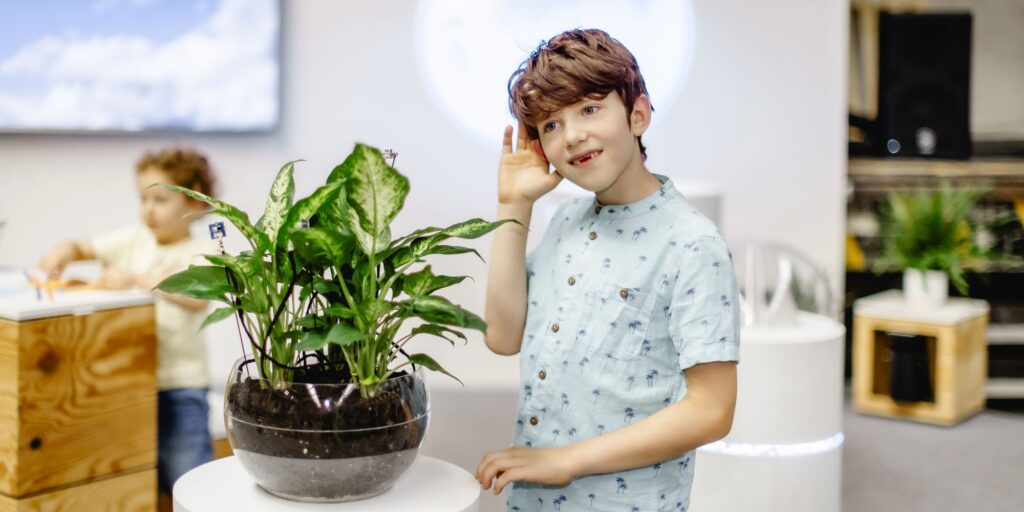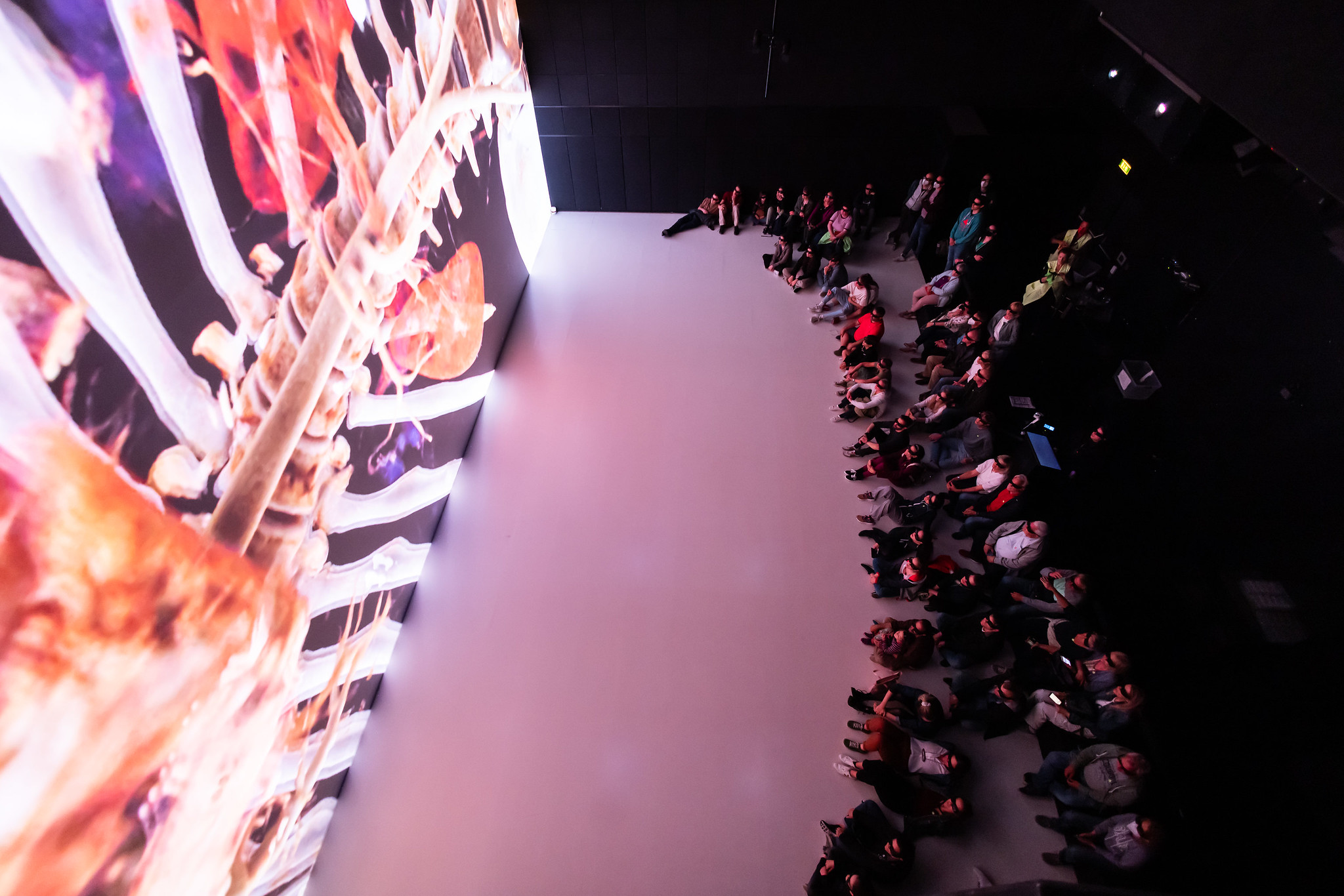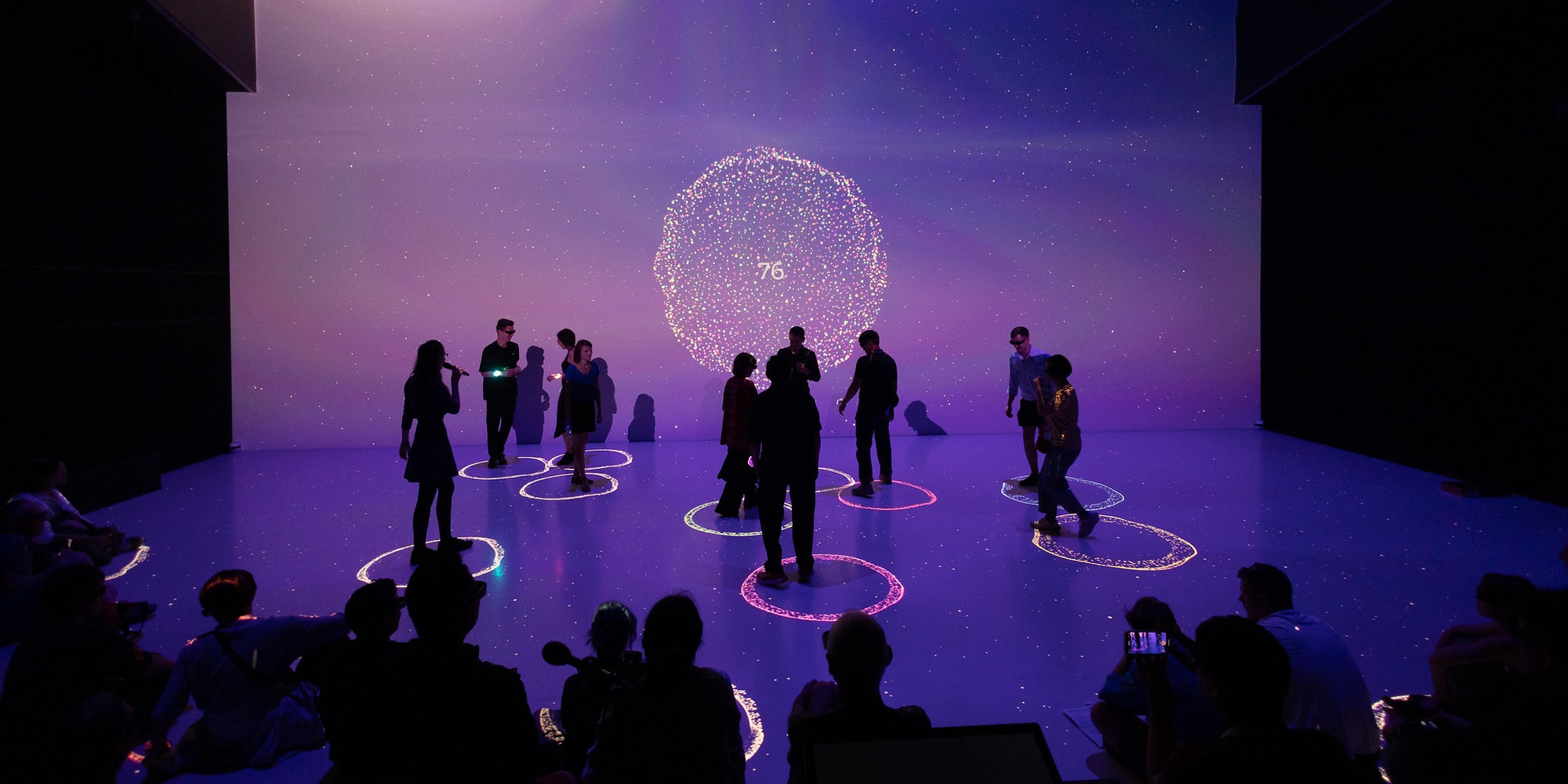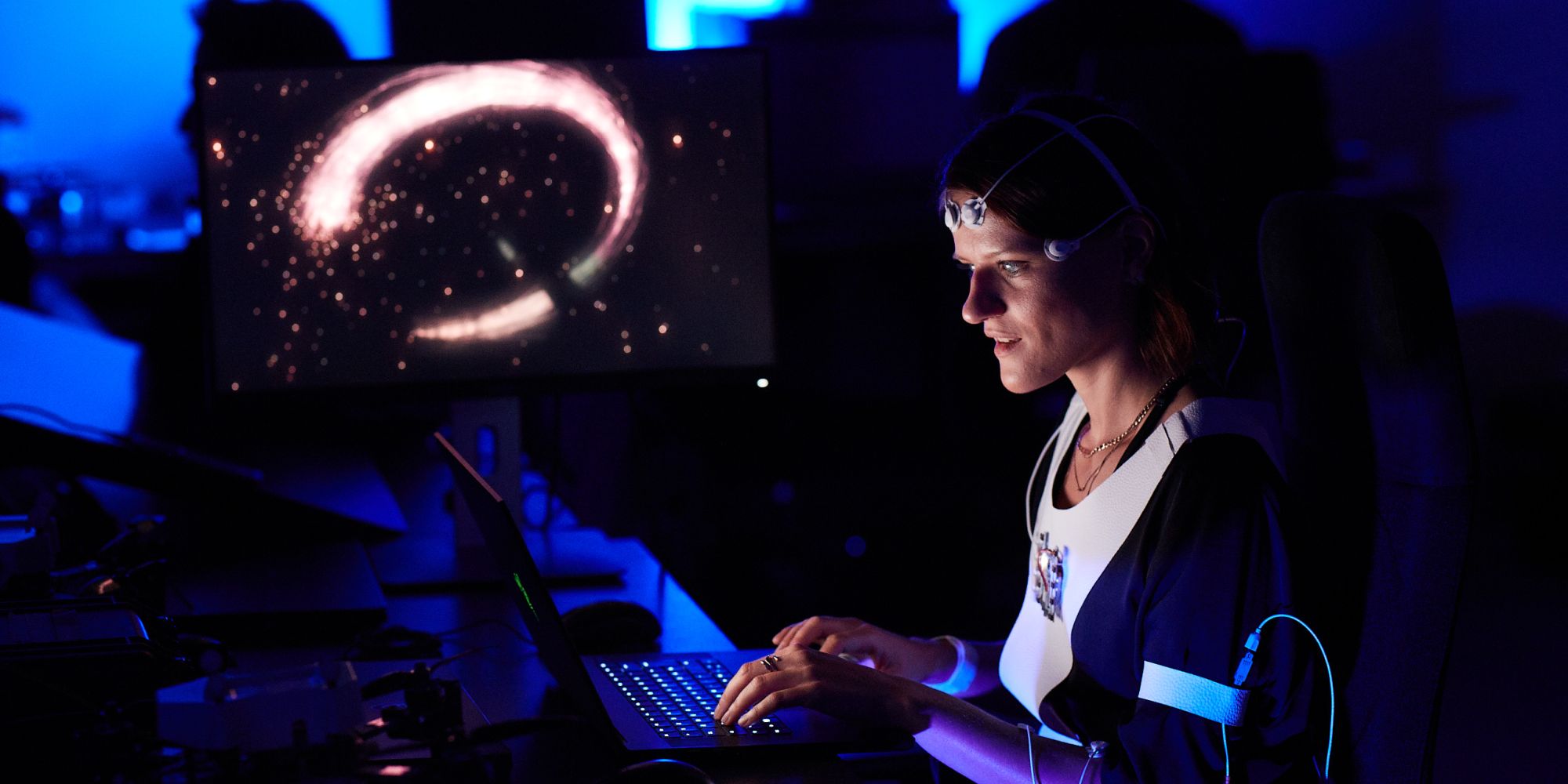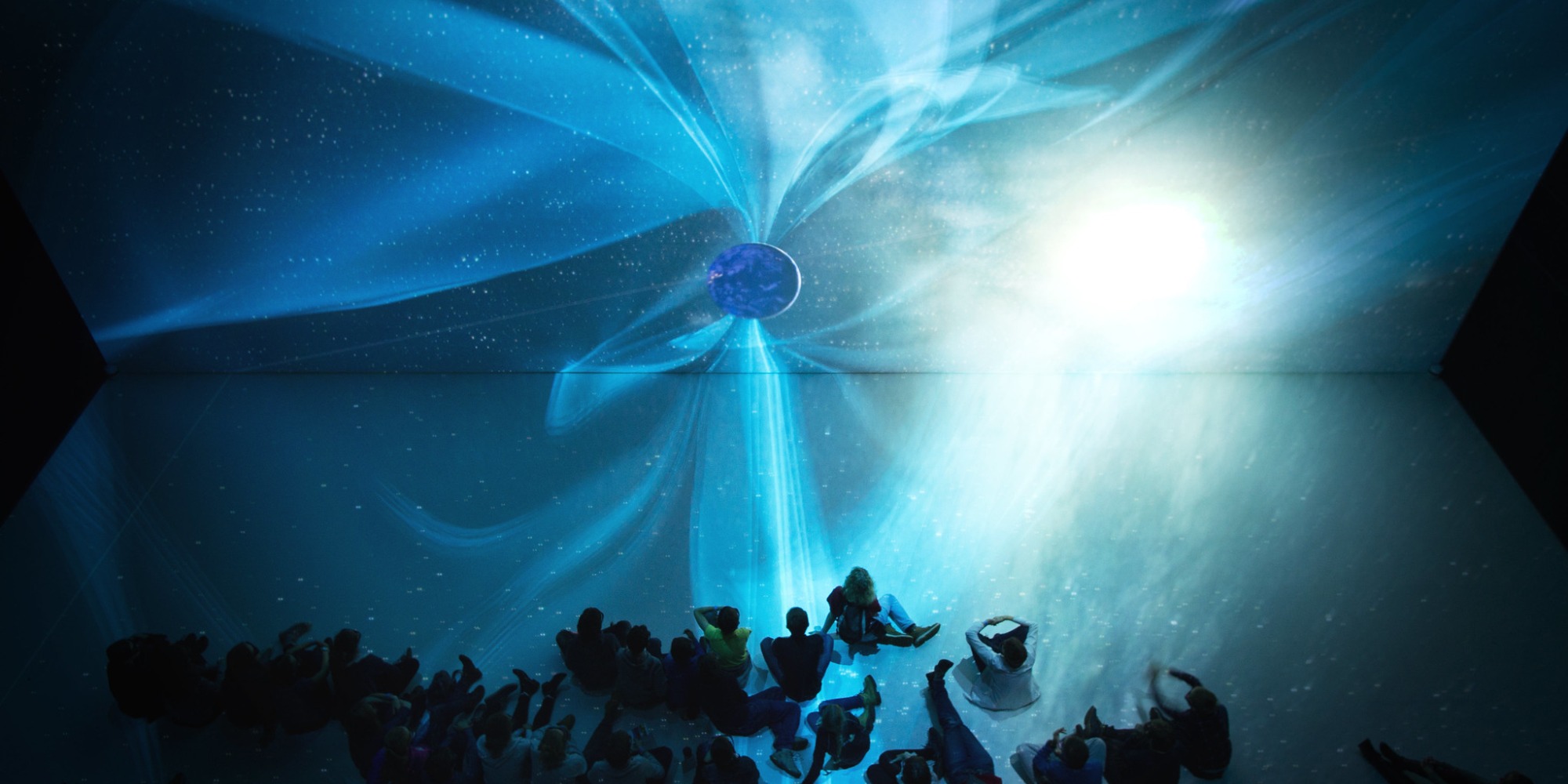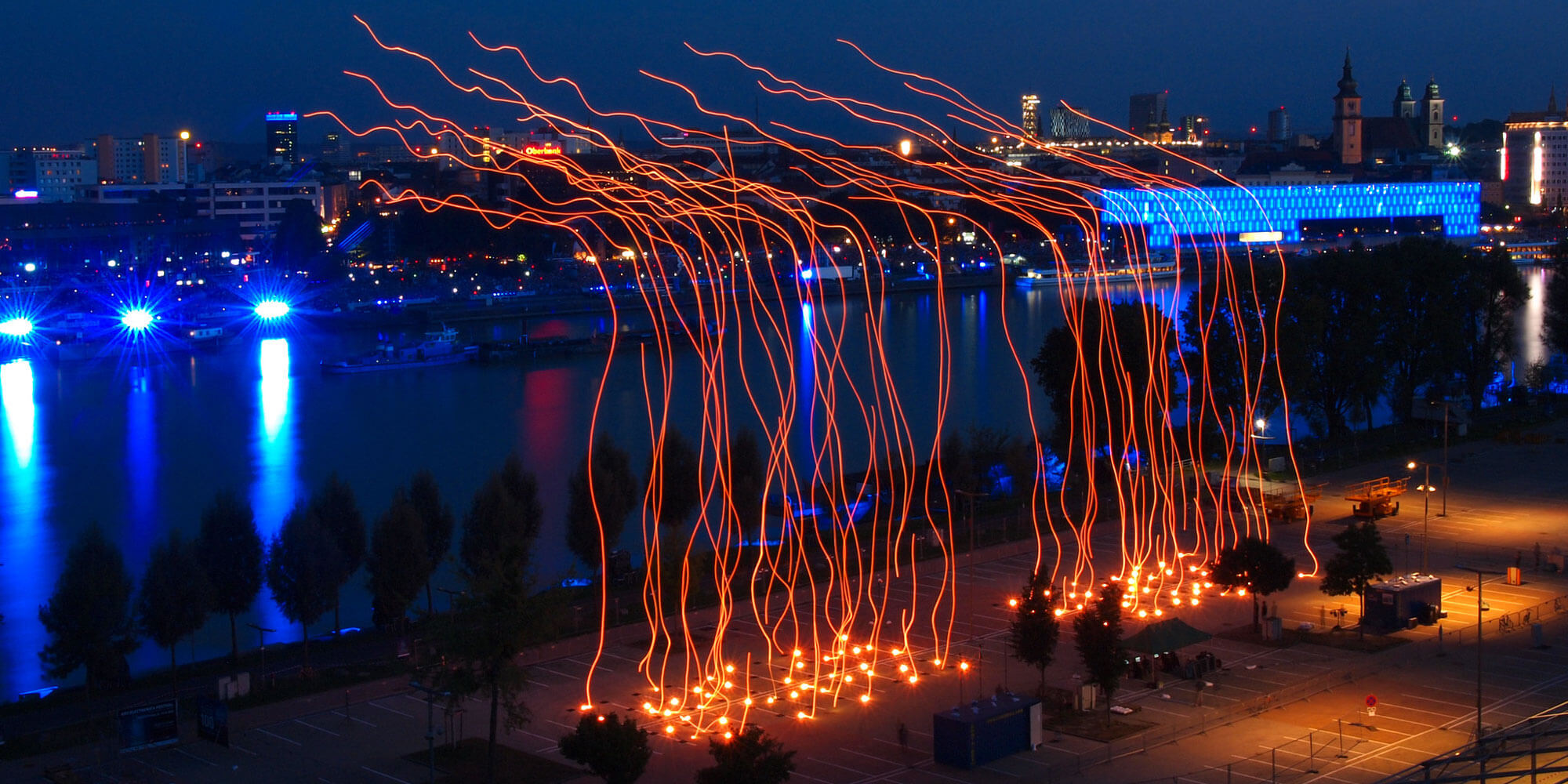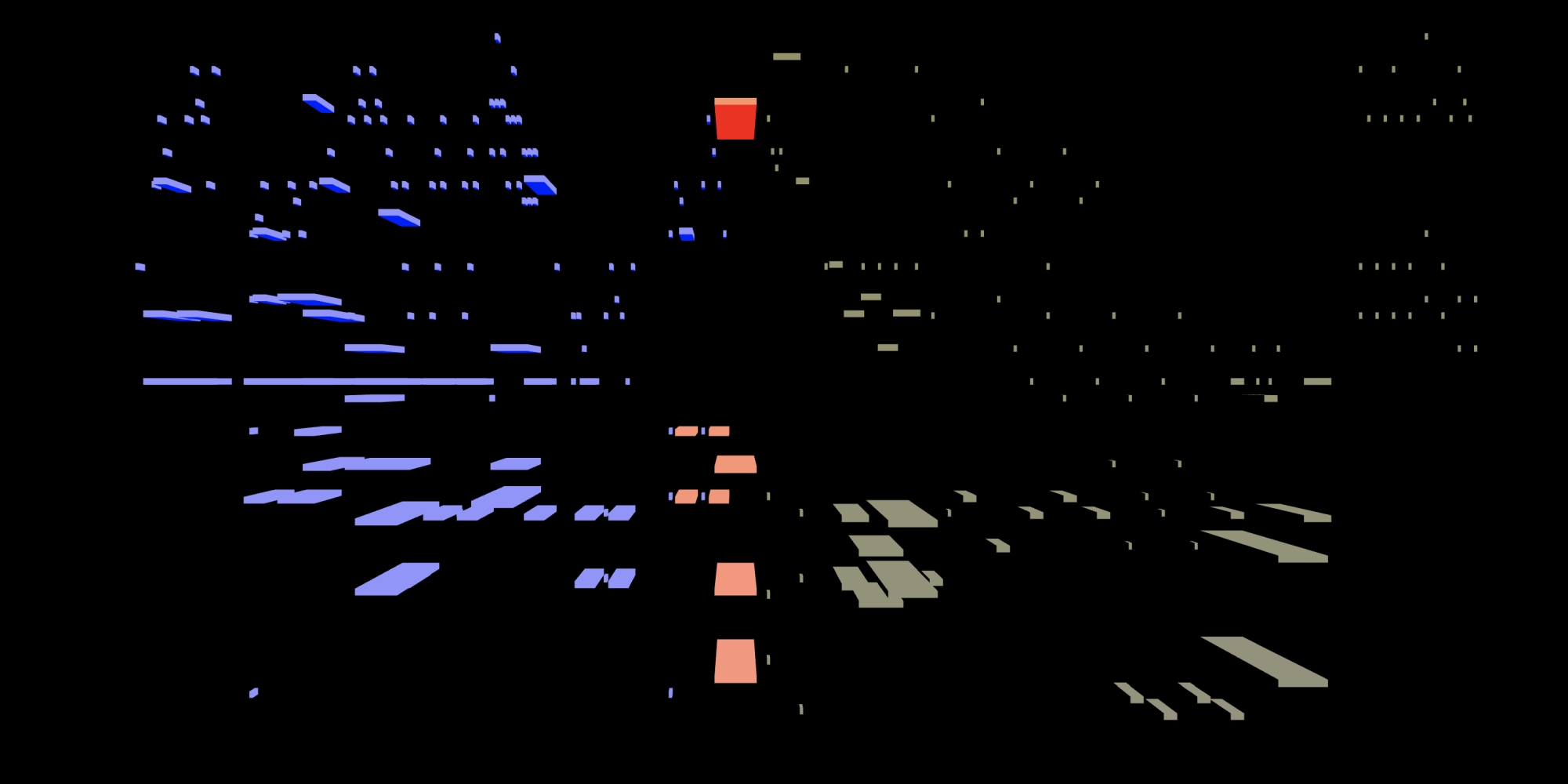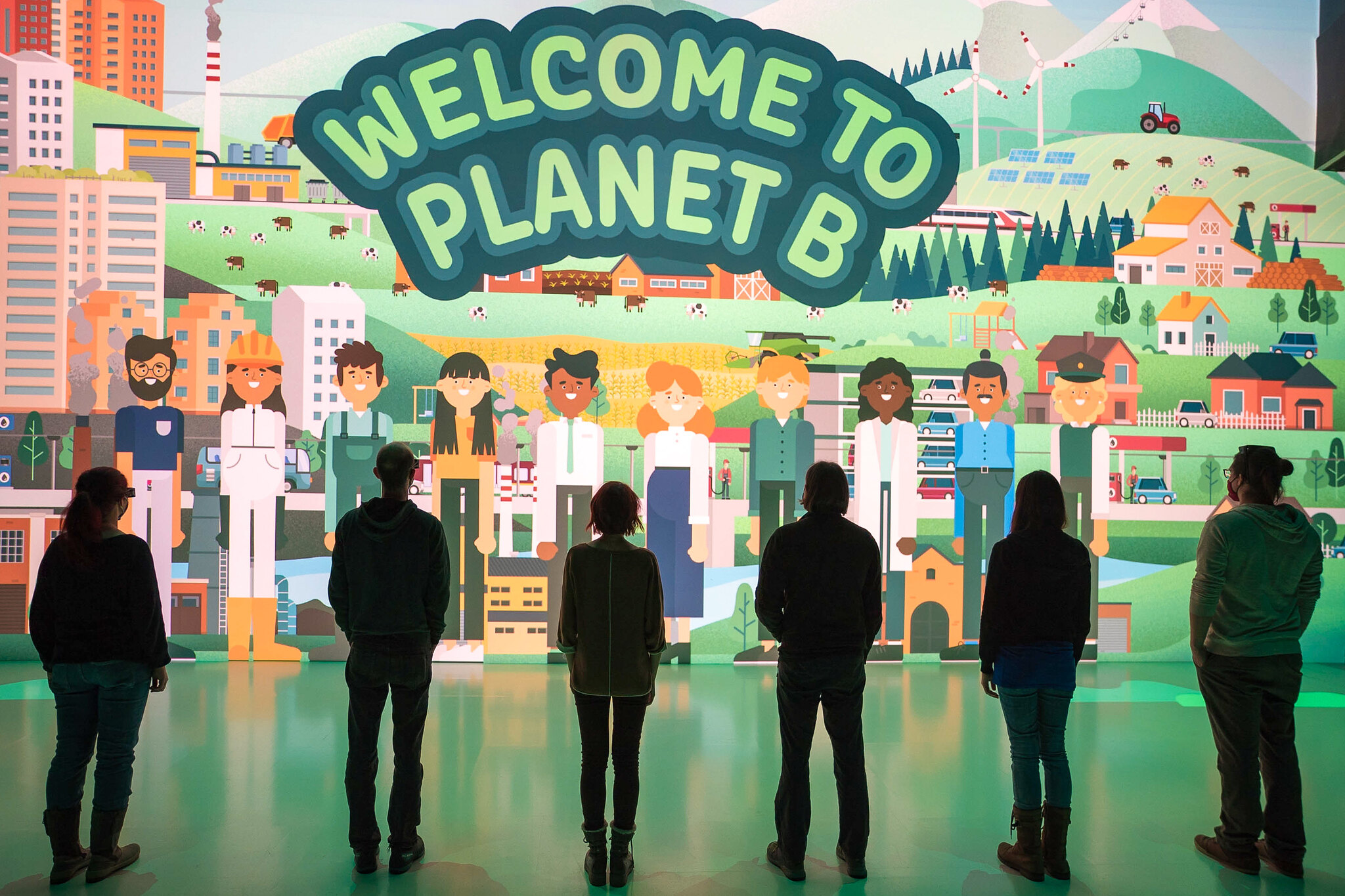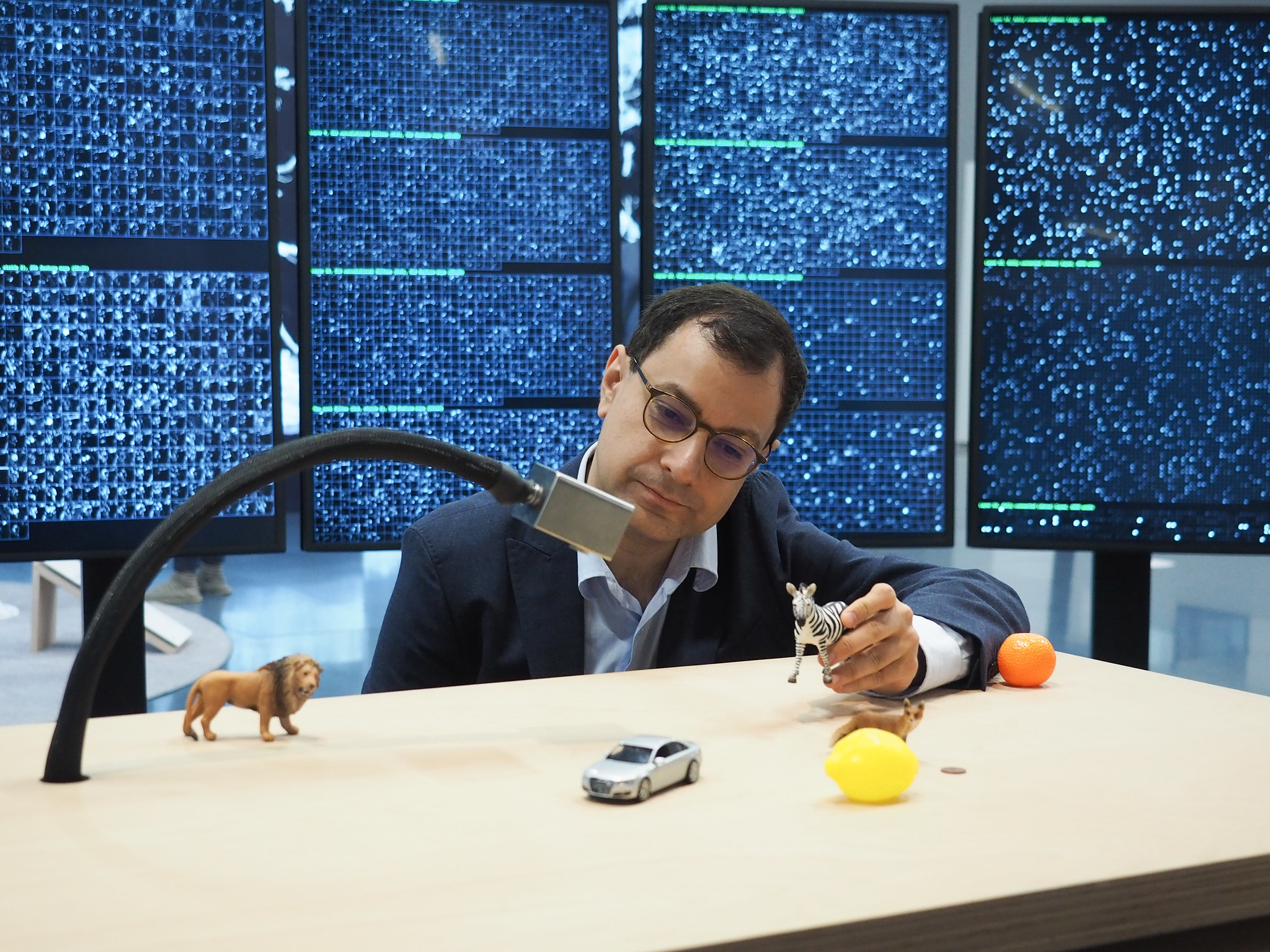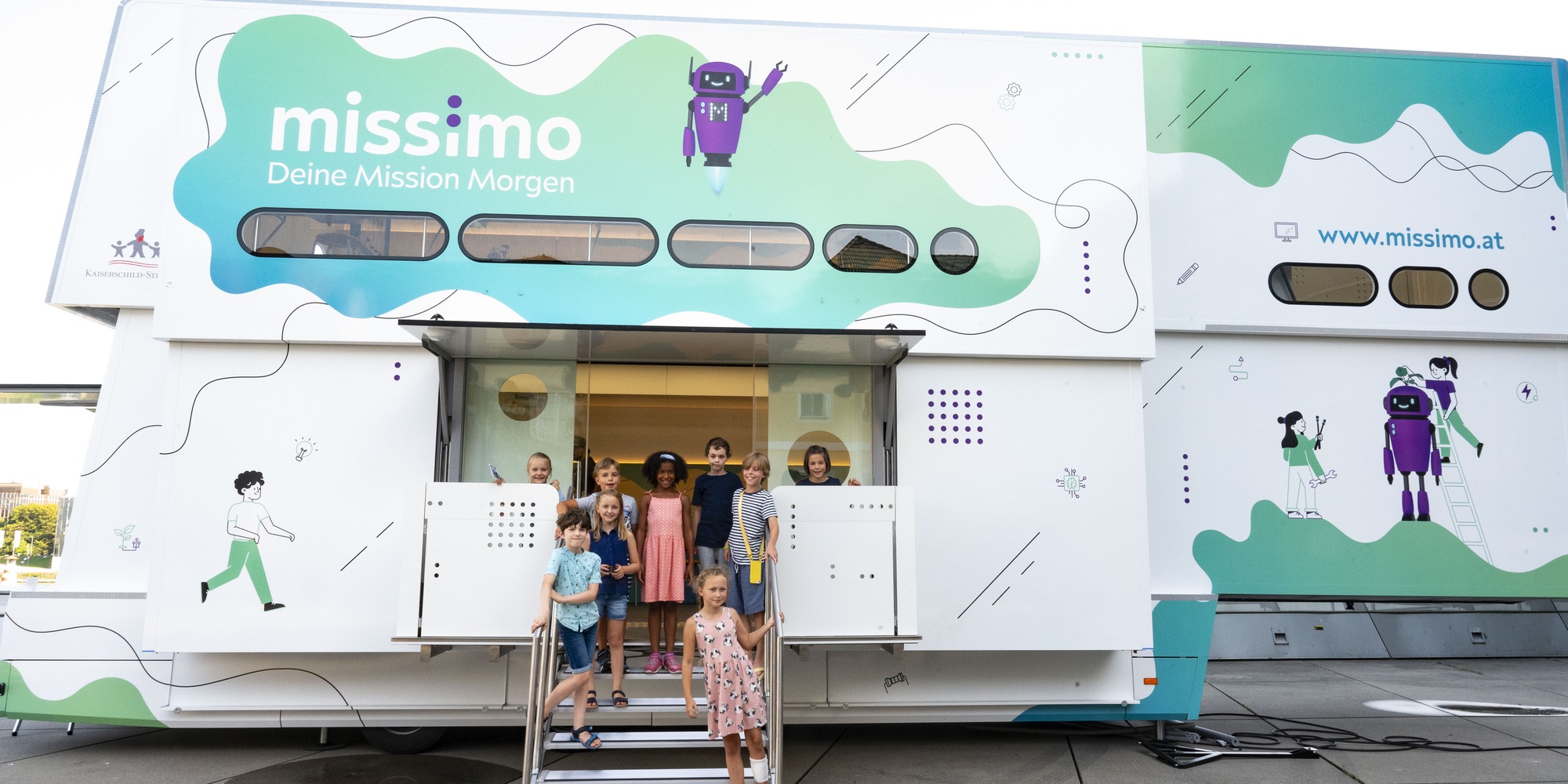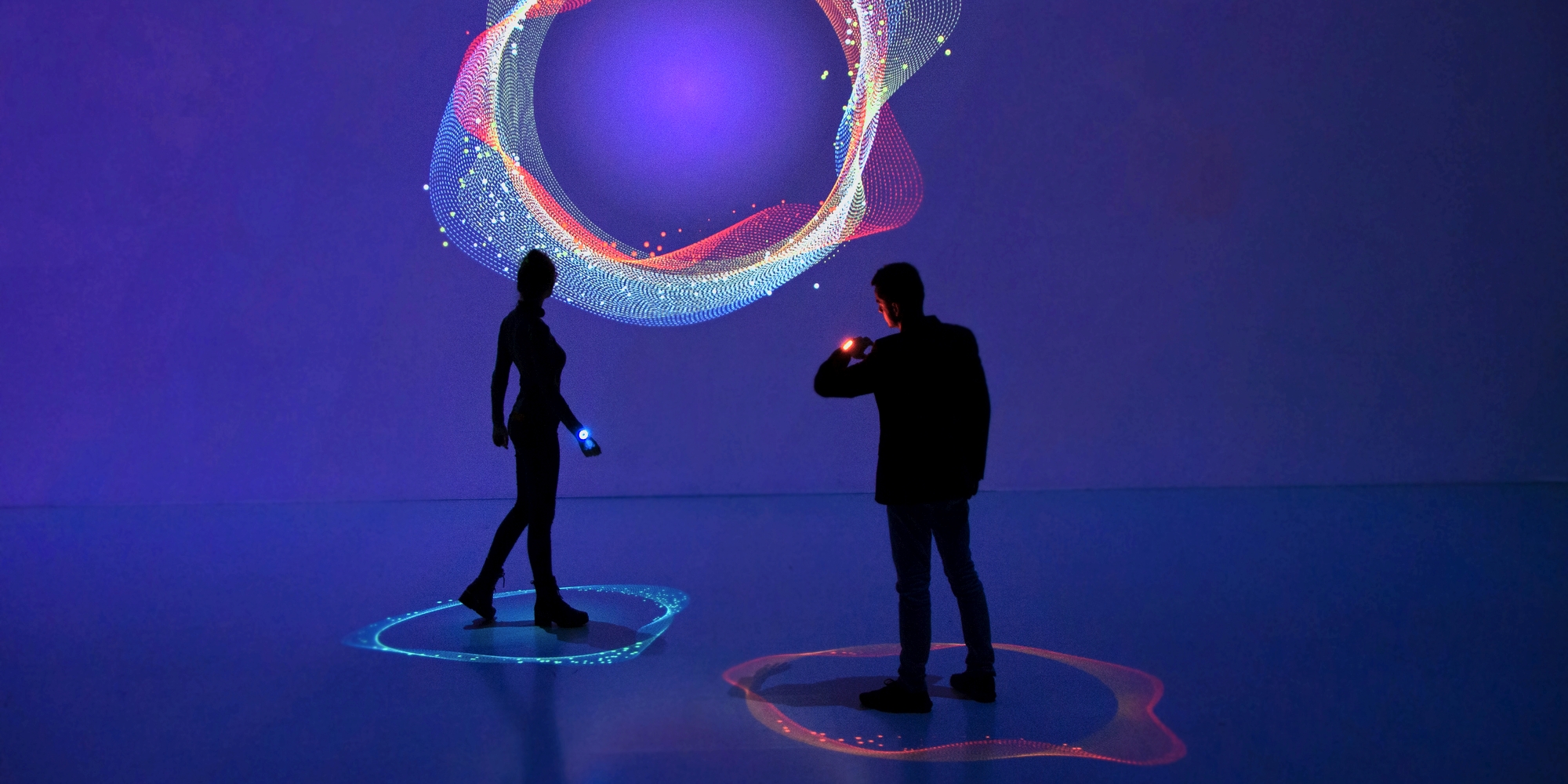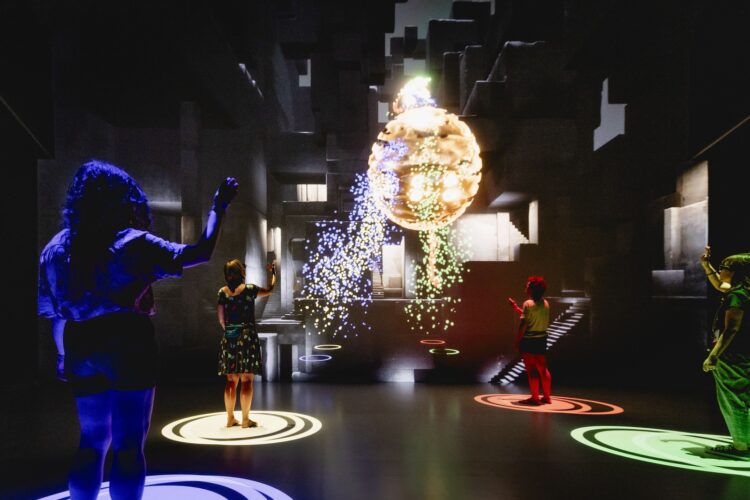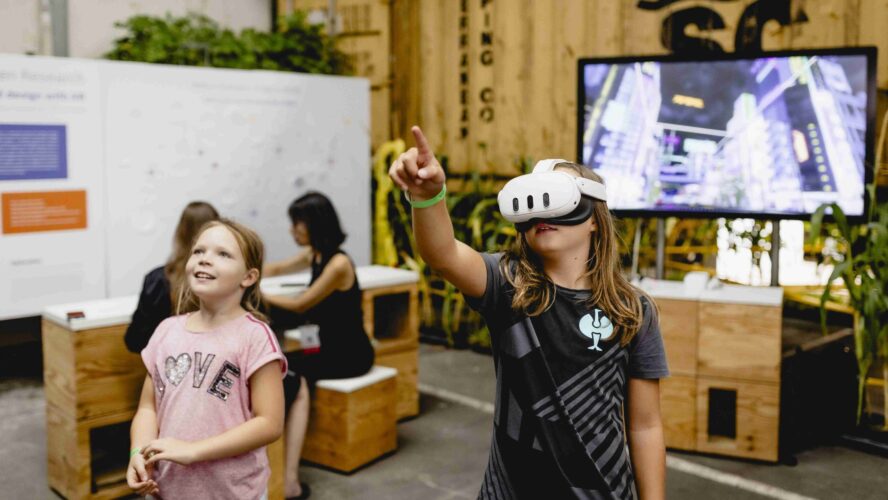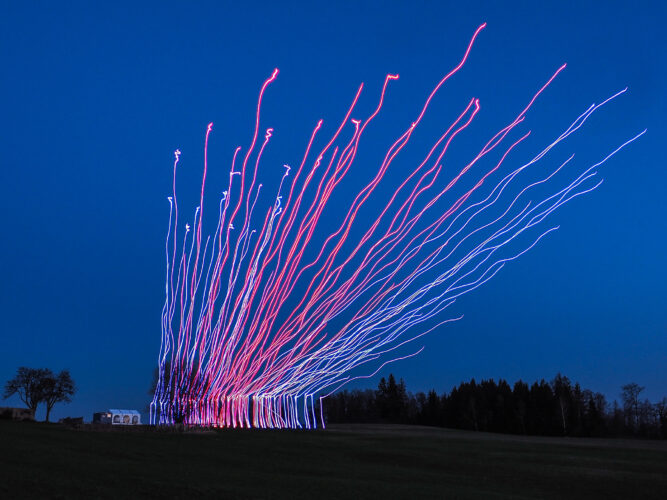Prototyping the Futures for Society
The Ars Electronica Futurelab is dedicated to inspiring society with unique prototypes of the futures, rooted in a humanistic approach. Merging artistic exploration with R&D, we build collective experiences and installations, new technological solutions, discussion platforms and education programs, architectural interventions, and more.
What We Do
We employ creative and experimental methods to explore future concepts, societal issues, and technological advancements.
Our creative method Art Thinking is at the heart of our activities, as are collaborations with international partners and working with artists through our Residencies. We share our artistic exploration with the public on occasions like Futurelab Night during the Ars Electronica Festival.
To create tangible future prototypes, research and development of cutting-edge technology are integral parts of the lab’s activities.
In our Art Science Research, we combine technology, science, and artistic methods, while our internal Ideas Expedition creates fresh ideas and unique outcomes. One of Futurelab’s most acclaimed inventions is the field of drone art, or as we call it swarms+art.
As part of Ars Electronica and with external partners: We open a space for communicating with the public.
The Futurelab is a proud part of the extensive Ars Electronica network, for example with Ars Electronica Japan. With the Open Futurelab, we expand the lab to the public, artists and partners each year during Ars Electronica Festival. We also offer various education programs, from workshops to exhibitions.
Our diverse team of artists, researchers, and programmers works with different cooperation partners from the fields of business, research, education, arts, and more. Together, we overcome boundaries of thinking to create singular experiences for broad audiences. To achieve unique outcomes, creative problem-solving for practical issues, R&D and prototyping are key components of Futurelab’s DNA.
Photo: Ars Electronica
An Artistic View on Technology
Art can communicate complex issues in memorable and immediate ways to broad and diverse audiences. It allows us to reimagine contemporary challenges and solutions, offering society the freedom for conscious engagement in technology and the futures that await us. Futurelab’s Art Thinking perspective incorporates both the inherent curiosity of artists and the responsibility to convey ethical and moral values.
To create tangible prototypes and engaging pieces of conversation for large audiences, we at the Ars Electronica Futurelab combine artistic methods with R&D and prototyping on cutting-edge technologies, including XR, VR, AI, drones and robotics, biotechnology, and more. Through exhibits, installations, and performances, our work offers environments for playful exploration of science and technology, and their impact on society.
Our topics span widely and invite people from all over the world, young and old, to join a dialogue about our futures.
To do so, the Futurelab team
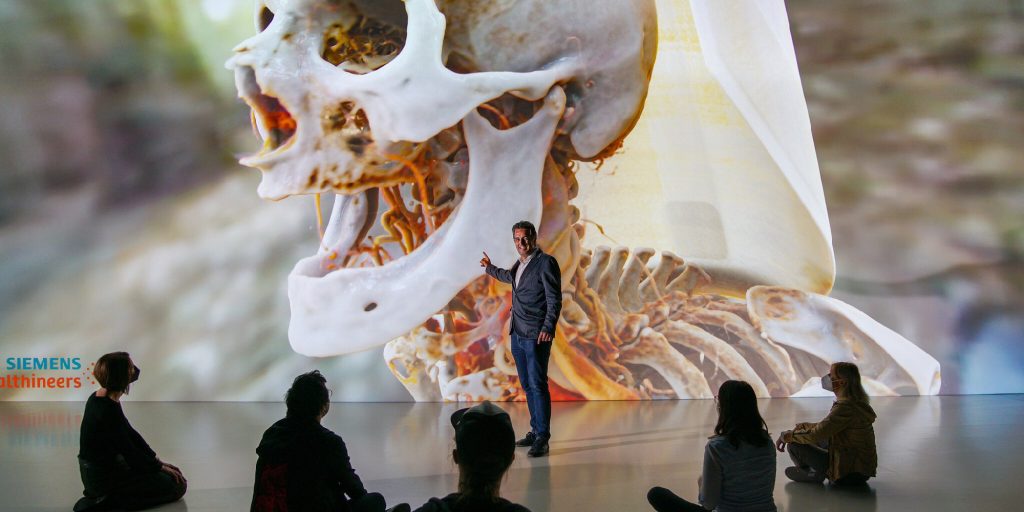
- invents groundbreaking technology such as the 3D immersive experience space for large audiences, Deep Space 8K, the whole genre of drone art with Spaxels, the music composition software Ricercar, and Life Ink that visualizes the creative spark,
- creates unique immersive experiences like the multiple award-winning Cinematic Anatomy x Deep Space, Playing Anton and Welcome to Planet B,
- provides futures literacy with popular exhibitions like Understanding AI and AI x Music at the Ars Electronica Center and other museums,
- comes up with fresh concepts and media formats on challenging topics like data usage, war, and climate change with works like the Data Art & Science Project, Hands for the Future, Dataspace, and Glockner.Luft.Raum,
Cinematic Anatomy x Deep Space; photo: Robert Bauernhansl
- creates new takes on academic education with collaborations like Founding Lab at IT:U, Keio University, and the Ars Electronica Futurelab Academy,
- catalyzes civic engagement with projects like Anatomy of Nudging and working worldwide with institutions like the Matsudo City International Science Art Festival,
- devises tangible education programs for kids like the STEAM truck missimo and the Coral Bike for schools,
- uses art as a catalyst for innovative inventions like Oribotic Instruments and Deep Sync as well as for fresh discussions, for example with the intergenerational game Bridge 2040,
- takes part in substantial collaborative research projects like Sharespace, AI5production, CoBot Studio, and Immersify,
- devises new conservation ideas for cultureal heritage that allow the public an in-depth look at historical objects and locations like Faust VR, Virtual Crib, and The Translucent St. Stephen’s Cathedral,
- and much more.
Future Teams; photo: Bettina Gangl
